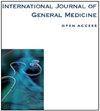与同种异体造血干细胞移植相比,猪抗淋巴细胞球蛋白、环孢素 A 和血小板生成素受体激动剂对再生障碍性贫血患者的疗效和存活率相似
IF 2.1
4区 医学
Q2 MEDICINE, GENERAL & INTERNAL
引用次数: 0
摘要
背景:使用马或兔抗人胸腺细胞免疫球蛋白(h-/r-ATG)的免疫抑制疗法(IST)和造血干细胞移植(HSCT)是重型再生障碍性贫血(SAA)和输血依赖性非重型再生障碍性贫血(TD-NSAA)患者的两种基本治疗方法。在标准IST疗法(h-/r-ATG)中加入血小板生成素受体激动剂(TPO-RAs)大大提高了SAA的存活率,而猪抗淋巴细胞球蛋白(p-ALG)与TPO-RAs联合治疗仍存在争议:我们回顾性比较了2020年至2022年间本中心48例AA患者的数据,其中23例AA患者接受了p-ALG±TPO-RAs治疗,25例AA患者接受了匹配同胞供者(MSD-)或单倍体(haplo-)造血干细胞移植:造血干细胞移植组患者3个月后的ORR为90.9%,明显高于IST±TPO-RAs组(45.5%,P=0.001);此外,与IST±TPO-RAs组相比,造血干细胞移植组患者更快实现独立输血,CR率更高,恢复正常血常规的时间更短,正常血常规的比例更高(均为P< 0.05)。中位随访时间为19.8个月(0.3-38.2个月),两组患者的2年FFS和OS无差异。亚组分析进一步表明,IST+TPO-RAs亚组与单倍体-HSCT亚组之间,以及IST+TPO-RAs组与MSD-HSCT组之间的2年FFS和OS相似。此外,造血干细胞移植组首次住院费用远高于IST±TPO-RAs组(402 756元对292 902元,P=0.002):结论:对于没有造血干细胞移植机会的AA患者,基于P-ALG的IST±TPO-RAs是一种很好的治疗方案,其FFS和OS与异体造血干细胞移植相似。本文章由计算机程序翻译,如有差异,请以英文原文为准。
Porcine Anti-Lymphocyte Globulin, Cyclosporine A Plus Thrombopoietin Receptor Agonists Achieved Similar Efficacy and Survival Compared to Allogeneic Hematopoietic Stem Cell Transplantation in Patients with Aplastic Anemia
Background: Immunosuppressive therapy (IST) with horse or rabbit anti-human thymocyte immunoglobulin (h-/r-ATG) and hematopoietic stem cell transplantation (HSCT) are two baseline treatments for severe aplastic anemia (SAA) and transfusion-dependent non-severe aplastic anemia (TD-NSAA) patients. Addition of thrombopoietin receptor agonists (TPO-RAs) to standard IST therapy (h-/r-ATG) has greatly improved the survival of SAA, whereas porcine anti-lymphocyte globulin (p-ALG) combined with TPO-RAs still had a matter of debate.
Methods: We retrospectively compared the data of 48 AA patients in our center between 2020 and 2022, 23 AA patients received with p-ALG ± TPO-RAs, 25 AA patients underwent matched sibling donor (MSD-) or haploidentical (haplo-) HSCT.
Results: For patients in the HSCT group, the ORR was 90.9% which was significantly higher than that in the IST±TPO-RAs group (45.5%, P = 0.001) at 3 months; moreover, patients who underwent HSCT achieved faster transfusion independence, better CR rate, shorter time of recovery normal blood routine, and the percentage of normal blood routine (all P < 0.05) compared with IST±TPO-RAs group. However, the ORR were similary at 6 months in the two groups (95.5% vs 81.8% P = 0.342), with a median follow up of 19.8 months (range, 0.3– 38.2 months), the 2-year FFS and OS in the two cohorts has no different. Subgroup analysis further indicated that the 2-year FFS and OS were similar between IST+TPO-RAs and haplo-HSCT subgroups, as well as in IST+TPO-RAs and MSD-HSCT cohorts. Moreover, the first-time hospitalizations were much more expensive in the HSCT group than in the IST±TPO-RAs group (402 756 vs. 292 902 yuan, P = 0.002).
Conclusion: P-ALG-based-IST±TPO-RAs is a good treatment option with similar FFS and OS compared to allo- HSCT for AA patients without the opportunity of HSCT.
Methods: We retrospectively compared the data of 48 AA patients in our center between 2020 and 2022, 23 AA patients received with p-ALG ± TPO-RAs, 25 AA patients underwent matched sibling donor (MSD-) or haploidentical (haplo-) HSCT.
Results: For patients in the HSCT group, the ORR was 90.9% which was significantly higher than that in the IST±TPO-RAs group (45.5%, P = 0.001) at 3 months; moreover, patients who underwent HSCT achieved faster transfusion independence, better CR rate, shorter time of recovery normal blood routine, and the percentage of normal blood routine (all P < 0.05) compared with IST±TPO-RAs group. However, the ORR were similary at 6 months in the two groups (95.5% vs 81.8% P = 0.342), with a median follow up of 19.8 months (range, 0.3– 38.2 months), the 2-year FFS and OS in the two cohorts has no different. Subgroup analysis further indicated that the 2-year FFS and OS were similar between IST+TPO-RAs and haplo-HSCT subgroups, as well as in IST+TPO-RAs and MSD-HSCT cohorts. Moreover, the first-time hospitalizations were much more expensive in the HSCT group than in the IST±TPO-RAs group (402 756 vs. 292 902 yuan, P = 0.002).
Conclusion: P-ALG-based-IST±TPO-RAs is a good treatment option with similar FFS and OS compared to allo- HSCT for AA patients without the opportunity of HSCT.
求助全文
通过发布文献求助,成功后即可免费获取论文全文。
去求助
来源期刊

International Journal of General Medicine
Medicine-General Medicine
自引率
0.00%
发文量
1113
审稿时长
16 weeks
期刊介绍:
The International Journal of General Medicine is an international, peer-reviewed, open access journal that focuses on general and internal medicine, pathogenesis, epidemiology, diagnosis, monitoring and treatment protocols. The journal is characterized by the rapid reporting of reviews, original research and clinical studies across all disease areas.
A key focus of the journal is the elucidation of disease processes and management protocols resulting in improved outcomes for the patient. Patient perspectives such as satisfaction, quality of life, health literacy and communication and their role in developing new healthcare programs and optimizing clinical outcomes are major areas of interest for the journal.
As of 1st April 2019, the International Journal of General Medicine will no longer consider meta-analyses for publication.
 求助内容:
求助内容: 应助结果提醒方式:
应助结果提醒方式:


